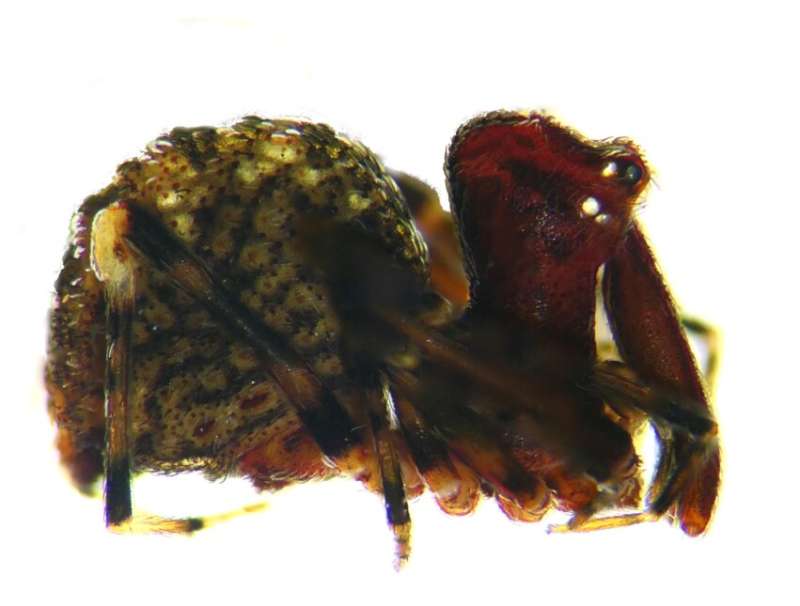New hope for ancient spider species feared extinct on Kangaroo Island

The recent discovery of two assassin spiders found living in a remnant patch of long unburnt habitat in Kangaroo Island have given new hope for the future of the ancient species after it was feared that they had become extinct.
Prior to the 2019/20 bushfires, the species of assassin spider—Zephyrarchaea austini—also referred to as a pelican spider, was only known to live in the Western River Wilderness Protection Area on Kangaroo Island, which burnt at high severity during the fires.
The two spiders with a unique pelican-like appearance, were found at one location in north west Kangaroo Island. The new discovery was made possible thanks to a grant acquired by the South Australian Museum through the Landcare Led Bushfire Recovery Grants Program, which is funding post-fire surveys of fire impacted areas on Kangaroo Island.
Revealing details of the find, Dr. Jessica Marsh, Honorary Research Associate at the South Australian Museum, said this is a promising breakthrough.
"This is the first time the species has been found since high severity fires burnt their only known collecting locality. We have been surveying for the spiders since the fires, so it was an amazing feeling to finally find one," said Dr. Marsh.
"The spider lives in leaf litter that is suspended at around knee height in low lying vegetation—a habitat which is highly flammable, even in low severity fire. It is found near creeklines in open eucalypt vegetation communities.
"A section of the Western River Wilderness Protection Area was burnt in a prescribed burn in 2015 and was not impacted by the 2019/20 bushfires. Post-fire surveys of the area have revealed that the elevated litter layer has still not yet formed in the vegetation and no habitat for assassin spiders was found, illustrating how even lower severity and planned burns can be a threat to this species. This also highlights its vulnerability, due to the length of time taken for suitable habitat to re-establish post-fire.
"Like other species of assassin spiders, the KI species has a very small distributional range and restricted dispersal abilities making it particularly susceptible to major threats, such as prescribed and wild bushfires, feral pigs and increased fragmentation of native vegetation."
As the name suggests, assassin spiders are skilled predators and prey on other spider species. Assassin spiders date back to the Jurassic period of more than 140 million years ago and play a critical role in the ecosystem despite their small size.
Though this discovery is encouraging, Dr. Marsh explains why more surveying is required to substantiate the status of the vulnerable species.
"The two spiders were found in only one batch of leaf litter; therefore, we need to undertake further surveying to find other populations on the Island and to better identify and mediate any threats, before we can be sure of its continued existence," she said.
Provided by South Australian Museum





















